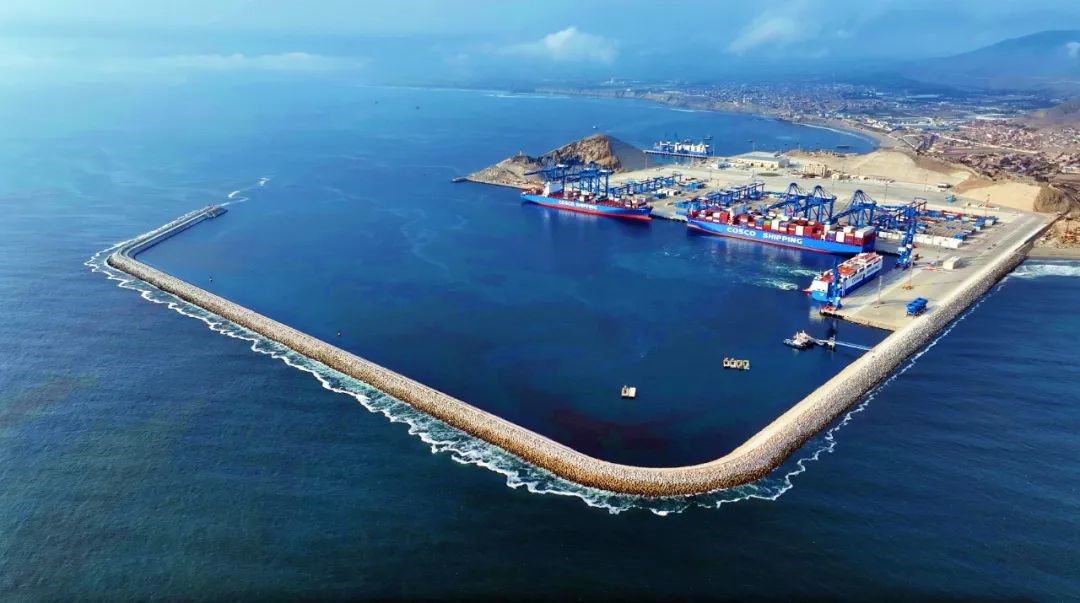Preliminary ICAIE Report: UNDERSTANDING THE STRATEGIC CHALLENGES OF THE PORT OF CHANCAY (PERU) IN THE REGIONAL CONTEXT
Washington, DC / ICAIE News (Press Release) / November 22, 2024: The International Coalition Against Illicit Economies (ICAIE) announces the publication of a new Preliminary Report, entitled,”Understanding The Strategic Challenges of the Port of Chancay (Peru) in the Region Context” in the Americas, co authored by ICAIE Advisors Douglas Farah, Pablo Zeballos, IBI Consultants.
Executive Summary: The PRC’s Transformative Acquisition of Chancay Port
The inauguration of operations in Chinese-controlled mega container port of Chancay, Peru on Nov. 14, 2024, likely represents a transformational moment in global supply lines and the correlation of Great Power forces in the Western Hemisphere. Its importance is perhaps matched only by the 2018 initiation of the PRC’s autonomous, military control deep space station in Neuquén, Argentina, in displacing the United States’ strategic influence, military power and economic interests.
The magnitude of the impact of the hemisphere’s newest mega container port in the PRC’s global strategy of economic and technological dominance is hard to overstate. In the strategic hemispheric and global contexts, the port will reshape global supply chains, solidify China’s control of key choke points in those supply chains–particularly crucial links to the United States–while directly challenging vital U.S. hemispheric interests.
The $1.3 billion investment by PRC state owned COSCO Shipping in Chancay, with more than $2.2 billion more to be injected in the next three phases of the port construction over the next six years, is the PRC’s most important strategic port acquisition in Latin America and is the crown jewel of its Belt and Road Initiative (BRI). This is part of a concerted effort by the PRC to not only expand its dominance of global trade, but is likely to become a preferred hub of illicit trade, as BRI projects, particularly ports, are noted for being hubs of criminality, trade-based money laundering, strategic corruption and malign influence operations.
We assess that the port’s operations – set to expand from the current four container berths to 15 berths (11 exclusively for container traffic and four multipurpose piers) on completion– will significantly realign the region’s economic and political balance in favor of the PRC and away from the United States.
A full analysis of the impact of the completed port is not possible at this time but will become measurable when Chancay is fully operational and must include an analysis of the changing logistics of the multiple illicit economies that are likely to move operations to the same pipelines built to move legal trade.
A 2020 U.S. Treasury Department sanctions release concluded that “The Chinese enterprises behind the BRI projects have several things in common: their leadership has links to criminal networks or actors involved in illicit activities in other parts of Southeast Asia, as well as China; they have pre-existing organizations engaged in casinos and crypto currencies; they advertise themselves online to be associated with Beijing’s BRI and flaunt connections with key Chinese government agencies; and all of them have established associations that actively seek to assist Chinese nationals.”
Conclusions: The port of Chancay, operating with numerous anomalies that characterize strategic Chinese investments, will likely be the catalyst for a profound realignment of South America’s licit and illicit supply changes and commerce. It also signals the ascension of China as the region’s primary partner of choice for economic, political and strategic development, displacing the United States, which has not matched China’s recent investment and commercial activities in Latin America or globally. This realignment will have multiple collateral effects and likely create new illicit economies and ecosystems around those economies that will pose strategic national security challenges to the United States and its allies in the hemisphere and beyond, in a world of interconnected threats.

